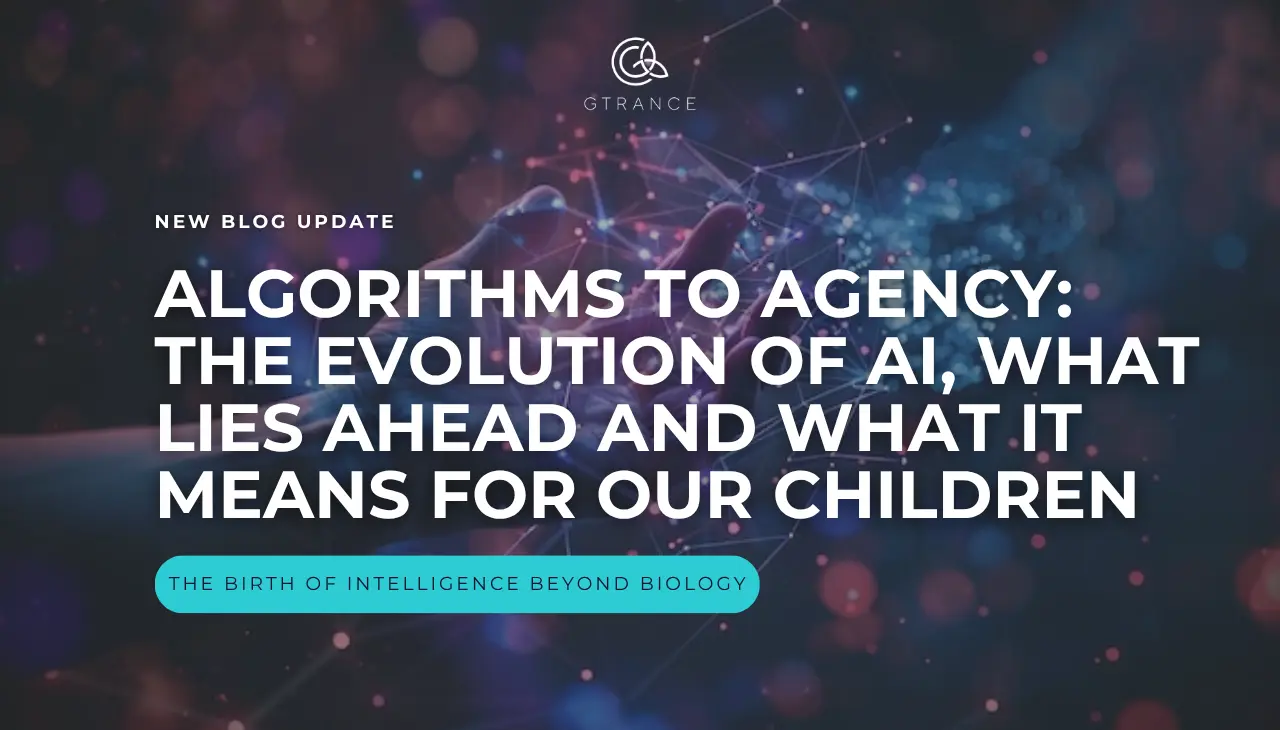
By Grace El Tayar – Lawyer, Chartered Governance Professional, Emotional Intelligence Trainer, and Advocate for ESG & Sustainable Innovation | Gifted to my five children: May you lead with wisdom in a world shaped by intelligence, both human and artificial.
The Birth of Intelligence Beyond Biology
Artificial Intelligence was born not in a lab, but in an idea that machines might one day mimic, or even surpass, human thought. The earliest AI pioneers of the 1950s Alan Turing, John McCarthy, and others laid the conceptual groundwork by asking a daring question: Can machines think? Back then, “thinking” was framed through symbolic logic and rules-based systems, yielding early programs that could play chess or solve algebra problems.
But these early systems were brittle. They lacked the adaptability and nuance of human intelligence, something I often reflect on through the lens of emotional intelligence, which governs not only our minds but the sustainability of our relationships and institutions.
The Shift to Learning: Machine Learning Emerges
By the 1980s and 1990s, the AI landscape began shifting from rule-based systems to machine learning (ML) the idea that machines could learn patterns from data instead of following rigid instructions. This was a foundational change. It mirrored how children learn: not by being told every rule, but by experiencing the world.
As a mother, I saw this evolution mirrored in parenting. Just as I guided my children to make sense of the world by observation, feedback, and experimentation, machine learning taught algorithms to recognize fraud in banking, personalize search results, and predict customer behavior.
Going Deeper: The Deep Learning Revolution
With the 2010s came an explosion in data and computing power. This fueled the rise of deep learning, a subfield of ML that uses neural networks layered architectures inspired by the brain. These models powered the breakthroughs we now take for granted: facial recognition, voice assistants, language translation.
It was a pivotal moment in AI history. Deep learning allowed machines not just to learn, but to perceive. And it raised new governance questions around bias, accountability, and transparency areas close to my heart as a Chartered Governance Professional and advocate for algorithmic accountability in the ESG era.
Enter Generative AI: From Understanding to Creating
Then came the age of Generative AI. Models such as OpenAi’s ChatGPT took the world by storm. As someone who has closely followed and studied this space through programs like MIT’s “Leading the AI-Driven Organization” and “Algorithmic Business Thinking,” I see this phase as not just technical but deeply societal.
Let me walk you through a quiet but profound transformation:
- ChatGPT-1 was a promising prototype, useful but limited.
- ChatGPT-2 showed more fluency but was still fragile.
- ChatGPT-3 stunned us with essays, poetry, and code.
- ChatGPT-4 layered reasoning and multimodal capabilities.
- ChatGPT-5 and beyond are shifting into agentic AI models that don’t just respond, but plan, act, and learn over time, almost like digital co-workers.
This transition marks the beginning of cognitive offloading at scale. It redefines what it means to work, create, and lead.
Agentic AI: The Rise of Autonomous Colleagues
We are now witnessing the dawn of agentic AI: systems that operate independently, hold goals, and adapt in real-time. These models can execute tasks across platforms, interact with APIs, and orchestrate workflows.
Agentic AI is to today’s chatbots what airplanes are to bicycles. As a board director, I see this evolution pressing a new urgency on strategic risk, workforce transformation, and ethical deployment.
This is no longer about efficiency, it’s about redefining capability.
Comparing the Evolution: A Quick Map
| Phase | What It Did | Example | Governance Implication |
| Rule-Based AI | Followed human-written instructions | Early chess programs | Low complexity, predictable outcomes |
| Machine Learning | Learned from structured data | Fraud detection | Data governance, bias mitigation |
| Deep Learning | Learned from unstructured data | Image recognition | Explainability, fairness, privacy |
| Generative AI | Created new content and insights | ChatGPT, DALL·E | IP, misinformation, workforce shifts |
| Agentic AI | Acts with autonomy, plans, learns | AutoGPT, open agents | Autonomy, control, accountability |
The Road Ahead: What Will the 2030s Look Like?
We stand at the threshold of a new era where intelligence is ambient, personalized, and proactive. In the coming decade, here’s what I believe we’ll see:
- Professions Reimagined: Routine-heavy roles basic legal research, entry-level accounting, copywriting may be replaced or dramatically reshaped.
- Human-AI Collaboration: Rather than eliminate jobs, AI will enhance roles in medicine, law, governance, and education by augmenting human insight.
- Emotional Intelligence Rises: Ironically, the more machine-driven our world becomes, the more unique human skills like empathy, ethical reasoning, and leadership will matter.
- Board Agendas Will Transform: AI governance, sustainability tech, and ethical innovation will dominate boardroom discussions. Digital literacy will become a fiduciary responsibility.
- New Jobs Will Emerge: AI auditors, prompt engineers, synthetic data ethicists, and sustainability-algorithm experts will become critical roles.
Designing a World Worth Living In
As someone trained at MIT and Harvard, I have been fortunate to study this transformation from both a technical and leadership perspective. Albeit my deepest learning comes from being a mother watching five curious, creative souls navigate a world I could scarcely have imagined at their age.
This article is my gift to them and to all those guiding the next generation.
AI is here to stay, and it is not just about smarter machines. It’s about building a smarter, fairer, and more sustainable world. One where intelligence serves humanity, not the other way around.
Let’s lead it ethically, wisely, and ecologically.
©️2025 Grace El Tayar